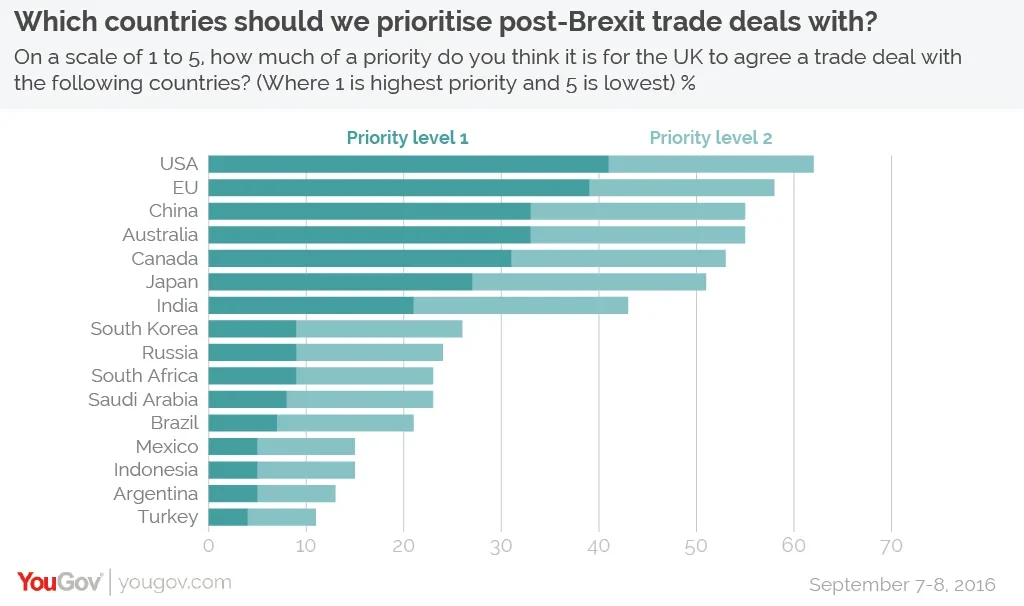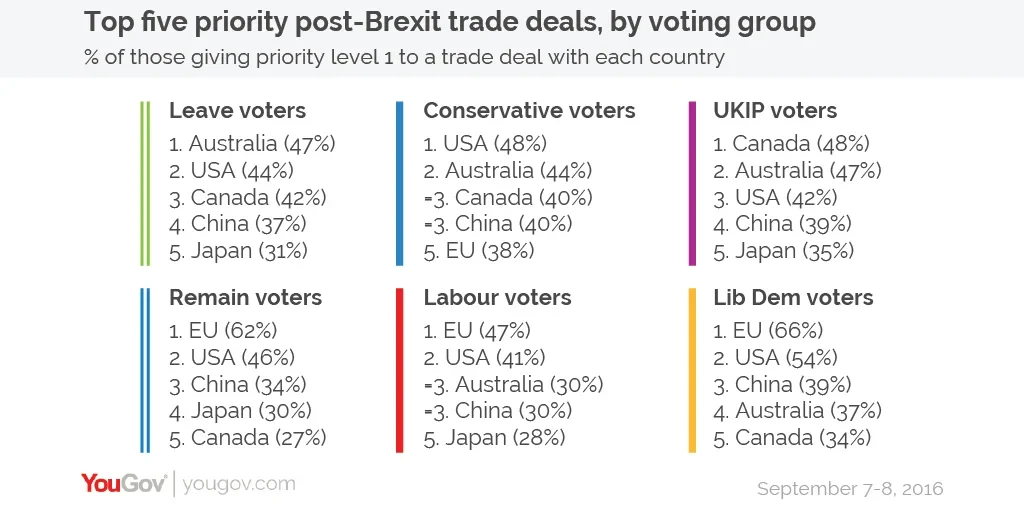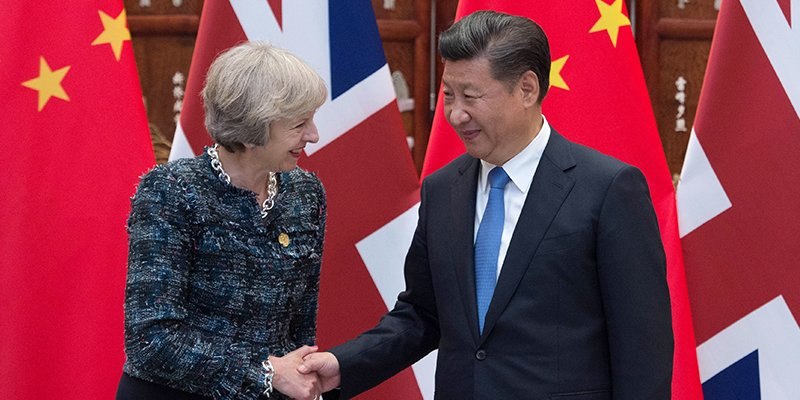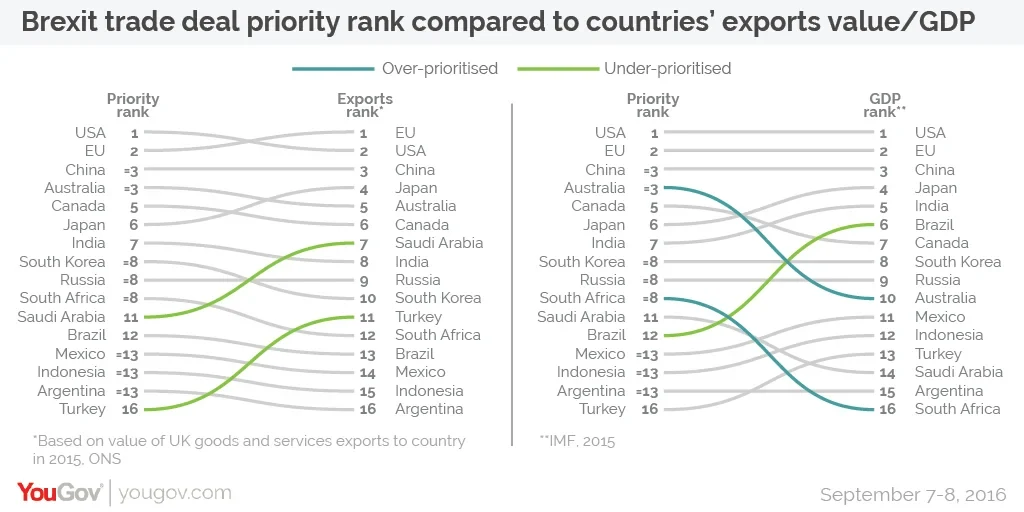Leave voters look to the Anglosphere whilst Remainers prioritise continental Europe and East Asia
Negotiating post-Brexit trade deals looks set to be a long and difficult process. Negotiations with the EU over the Brexit settlement will be torturous and will take years. Countries like Australia have said that they will not enter into trade negotiations with the UK until the Brexit settlement has been completed. And US president Barack Obama has said that the UK would be back of the queue on trade deals in the event of Brexit.
But which countries does the British public think the UK should be prioritising trade deals with?
We asked how high a priority – on a scale of 1-5 – a trade deal with each member of the G20 should be (grouping EU members as a single trade bloc, with 1 being the highest priority, 5 being the lowest).

The US and the EU are the public’s top priority. A second tier of high priority deals consists of China, Australia and Canada and Japan, followed by India in a high-to-middling priority tier by itself. A further nine G20 nations were given a middling-to-low priority and occupy the bottom tier.
The two sides of the EU referendum debate prioritise a trade deal with the EU very differently. For Remain voters, a deal with the EU is an absolute top priority for 62%, topping their list. For Leave voters, on the other hand, the EU doesn’t even make the top five. Just 23% of Leave voters think that a deal with the EU is top priority, making it seventh overall on their list.

Surprisingly, the country that the most Leave voters want to do a deal with is Australia (47%). By contrast, only 26% of Remain voters thought that Australia was a top priority, placing it sixth overall on their list.
There is a clear split between those people who prioritise trade with Anglosphere nations above all others, and those who look to continental Europe and East Asia. Leave, Conservative and UKIP voters all have the USA, Canada and Australia in their top three positions (albeit in different orders).
Remain, Labour and Liberal Democrat voters, on the other hand, all place the EU in their top spot, and place at least one Anglosphere country below China and/or Japan. The USA and China are the only countries to appear in every voting group’s top five.
Overall, the ordering in which countries were prioritised by the general public quite accurately reflects the importance of those nations to the UK in terms of both current and potential exports value. However, there were some important distinctions.
Ranking countries by their Priority 1 score and comparing this against the value of goods and services the UK currently exports to those countries, it is clear that both Saudi Arabia and Turkey are highly under-prioritised compared to the actual value of their exports market to the UK. Saudi Arabia placed 11th on the public’s ranking, whilst it came 7th on the exports value list. Turkey is even more under-prioritised, placing bottom (16th) on the public list, whilst being the 11th most valuable export country.
Using countries’ GDP as a rough proxy for how much trade potential they have shows that Brazil is being under-prioritised in this regard. With a GDP of $1.8tn according to the IMF, Brazil has the sixth highest GDP on the list, yet places 12th on the public’s ranking.
The public are also over-prioritising South Africa and Australia in GDP terms. South Africa has the lowest GDP of the 16 economies on the list, but is ranked =8th by the public, alongside Russia and South Korea.
Australia’s over-prioritising is even more drastic. With a GDP of $1.2tn it is the tenth largest on the list, yet is placed =3rd on the public’s priority list, joint with China whose GDP is more than ten times the size of Australia’s.
Photo: PA













